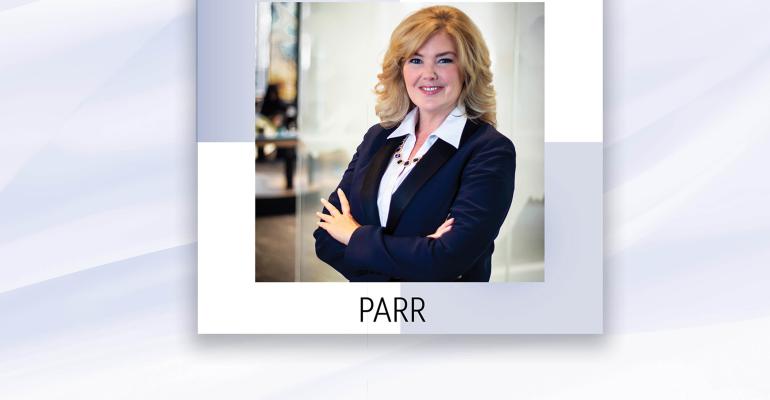Even with much of her career still ahead of her, Lauren Parr is fine with being called a lifer in adult education because of her passion for the discipline—something that planners absolutely need if they aspire to the executive level.
“I have a degree in education and for my first few years, I was a schoolteacher,” she notes. “But then I started checking out the nonprofits and it turned out that I love what associations do—they drive the advancement of professions and make the entire world better.”
Parr started her career as manager of technical programs for the Water Environment Federation in 2002, moving on three years later to the American Society for Microbiology as manager of CME and professional development. Her break into the executive ranks happened in 2009, when she became vice president of education and professional development at the Regulatory Affairs Professional Society. And since 2015 she’s been at the American Geophysical Union, where she’s now the senior vice president for meetin gs and learning.
gs and learning.
In her planner positions, Parr demonstrated her passion through strong tactical execution across the various elements of the events on her calendar. However, she also kept her eye on making her organization more valuable to its members and more valuable as a business through its learning events. “I never sat down and thought, ‘I’d like to be a V.P. someday.’ But I’ve always said to myself, ‘How can I do better in this role than what is expected?’”
To become noticed upstairs, planners “must focus beyond the logistical and tactical aspects of the work that they are comfortable with,” she says. “Moving up depends on having a strategic mindset; executives are able to see how a division’s operations can further contribute to the organization’s long-term goals.”
Good Ideas Are Not Enough
According to Parr, planners can demonstrate executive competency by advancing creative ideas about meetings and education that make the organization stronger—but that’s not all. She stresses that “when you find those opportunities, you must be a champion: someone who is willing to do the work to move those ideas forward.”
In other words, each proposed idea is a chance for a planner to show her full skill set and value and make a strong impression on the leadership team. For planners with ideas, then, here is Parr’s suggested pitch to management: “’Strategically, I think that that this is an opportunity for us to become a more effective organization, and here’s why. Tactically, here is how I can help make it happen.’” From her perch, “when I see people do that effectively, it is so exciting,” she says.
However, because budgets and return on investment are always central factors when proposing new initiatives, Parr laments that “one of the skills that I see lacking from a lot of planners is financial acumen.” Education and guidance in project finance can come in the form of formal classes or from mentors cultivated within the organization or across the meetings industry, she says.
“If you don’t feel comfortable with the basics [of presenting a financial case], there are some good programs through ASAE and other industry associations,” Parr notes. “Actually, some of the strongest financial acumen I see in the meetings industry is on the supplier side—those working in hotels and in audiovisual and production”—so they might be colleagues with whom a planner networks and consults. In any case, “you can’t rise through the ranks without understanding the financial metrics connected to the ideas you propose.”
Performance Analysis Is Key
At AGU, Parr and her fellow executives conduct quarterly reviews of their employees’ work, and those who keep detailed journals of their efforts and the related results are noticed.
“Approaching your work with an outcomes mindset is so important,” she says. “Yes, you’ve coordinated good meetings. But how did each one advance the mission of our organization? What specific outcomes did you set out to achieve, and what’s the proof that you reached them? And if you did not get the desired outcome, I really appreciate hearing, ‘Here’s why the initiative didn’t work, and here’s what I learned from it.’ If you can tell me that part of the story, I’m going to be very interested.”
One last element that aspiring executives should keep in mind, says Parr: “Servant leadership means you aren’t above people; a good boss does whatever has to be done on site right alongside her team. And in the end, you must spread the credit around to keep your colleagues’ trust and respect and keep them engaged. As a planner, get used to acknowledging others to demonstrate your leadership mindset.”
More Executive Profiles
• The Path to Executive: Japan as a Proving Ground
• The Path to Executive: Understanding People and Possibilities
• The Path to Executive: Grab the Stretch Assignment (and a Mentor)





